CeylonMine

CeylonMine is a pioneering digital platform designed as a case project to modernize and streamline mining operations in Sri Lanka, with a special focus on licensing, compliance, and environmental safety. Developed initially in collaboration with the Geological Survey and Mines Bureau (GSMB), CeylonMine addresses long-standing challenges miners face, such as complex licensing procedures, royalty confusion, and inefficient manual processes.
The platform introduces a License Application Wizard that simplifies the end-to-end application workflow, supports document uploads for land ownership and environmental clearance, and ensures form validation to minimize delays and rejections. It also features real-time license tracking, automated royalty calculation tools, and renewal notifications, all aimed at reducing physical visits and administrative burdens.
Beyond compliance, CeylonMine enhances transparency and safety through features like scam prevention (by monitoring extracted volumes), interactive mineral heat maps, and community safety alerts on environmental risks near mining sites.
As a case project, CeylonMine serves as a model for digital transformation in the mining sector with potential to expand into a national-scale platform and even scale globally. Future phases envision integration with IoT for real-time extraction data, AI for fraud detection, and blockchain for transparent recordkeeping. The broader potential lies in its scalability to support private contractors, construction firms, logistics providers, and even mineral export compliance, positioning CeylonMine as a digital backbone for the future of ethical and efficient mining, also including other sectors.
HarvestSmart
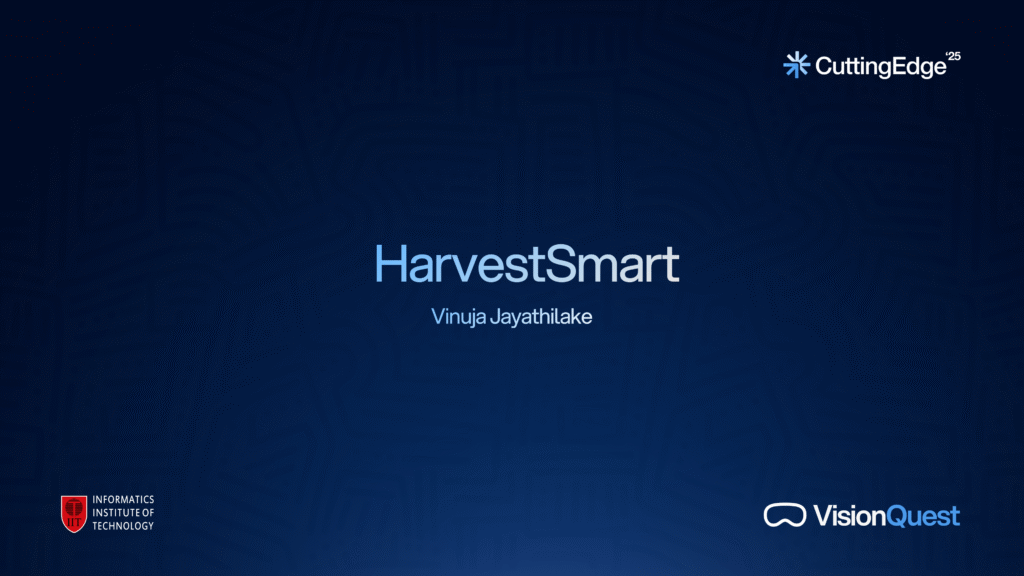
“Manual assessment of oil palm fresh fruit bunch (FFB) ripeness in plantations is often inconsistent, time-consuming, and heavily reliant on individual experience. These inefficiencies can lead to mistimed harvesting, reduced oil quality, and lower yields. HarvestSmart addresses this challenge by providing a mobile-based, AI-powered solution for real-time ripeness detection and daily harvest reporting.
The system leverages a lightweight deep learning model based on YOLOv10, enhanced with Low-Rank Adaptation (LoRA) to significantly reduce the number of trainable parameters and computational load. The model was optimized and converted to TensorFlow Lite for seamless execution on Android devices, even in offline rural environments. Farmers can use the app to scan oil palm bunches in the field, receive immediate classification results—such as ripe, underripe, overripe, or abnormal—and generate PDF-based harvest summaries.
In addition to detection, the app features a reporting module that archives daily results, helping farmers and supervisors monitor harvest quality and make data-driven decisions over time. The interface is built with simplicity in mind, ensuring ease of use for non-technical users.
By integrating AI into everyday farming workflows, HarvestSmart improves productivity, minimizes waste, and empowers smallholder farmers with accessible agricultural technology—turning smartphones into powerful harvest tools.”
Analyzing the difference in rates of changes of shoreline in critical regions of Sri Lanka

The Cutting Edge project delivers an end-to-end web application for automated shoreline detection and quantitative change analysis tailored to Sri Lanka’s most vulnerable coasts. Users upload two raw Sentinel-2 satellite images, which are first validated by an image classifier to ensure they contain a shoreline view. Next, the system applies deep-learning segmentation—evaluating four state-of-the-art architectures (FCN8, U-Net, SegNet, and Deeplabv3+)—to generate precise binary masks of land–sea boundaries, selecting the highest-accuracy model for downstream analysis Group 19.
Once segmented, the application computes two established metrics: End Point Rate (EPR), capturing the annualized rate of shoreline movement, and Net Shoreline Movement (NSM), indicating the total displacement between dates. These statistical models, driven by multi-temporal Sentinel-2 imagery spanning 2019–2023, enable robust identification of erosion and accretion hotspots and outperform purely manual or DSAS-based approaches by automating both image processing and trend forecasting Group 19.
An integrated chatbot guides users through the analysis workflow, answering domain queries (e.g., “What is EPR?”) and interpreting results, while an image-validation component prevents erroneous inputs. The platform’s interactive visualizations and downloadable reports—including georeferenced maps of shoreline change—empower researchers, coastal managers, and policymakers with timely, evidence-based insights to inform conservation strategies, coastal engineering decisions, and community-focused adaptation measures. By streamlining complex image-analysis tasks into a user-friendly interface, this system significantly enhances the efficiency and accessibility of coastal monitoring efforts in Sri Lanka.
Coastal Canopy
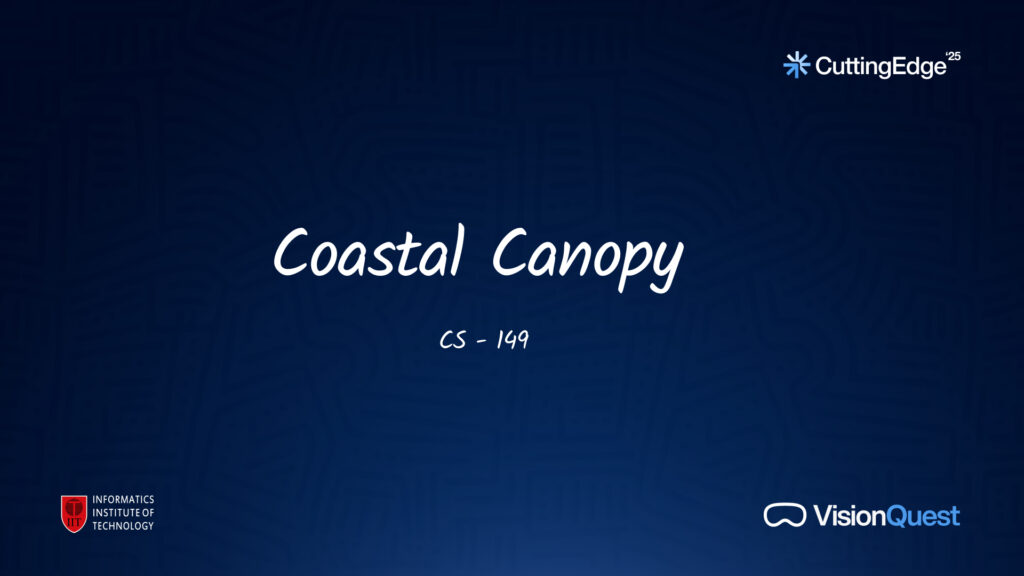
Mangrove ecosystems in Sri Lanka are being rapidly destroyed due to human activities such as deforestation, urbanization, and pollution, leading to the loss of biodiversity and disruption of local ecosystems. Our solution for this problem is coastalcanopy.org.lk; A community-driven web application designed to protect and restore Sri Lanka’s mangrove ecosystems. Key functionalities of our application are:
Community Reporting: Users can report issues such as illegal logging, coastal encroachments, or mangrove health concerns. Reports can be submitted anonymously to encourage participation in sensitive or high-risk areas.
Interactive Map: A dynamic map visualizes the current distribution and extension of mangroves across Sri Lanka.
Mangrove Monitoring Dashboard: Visual tools like graphs and charts track the historical degradation of mangroves and project future scenarios if current trends continue.
Learn: The platform features a rich collection of articles, videos, and news content about mangrove ecosystems, biodiversity, and the importance of preservation.
Social Media Integration: Users can share their conservation activities, badges, or achievements directly to social media platforms.
Plant a Virtual Mangrove(EcoScore): Users earn points through active engagement (e.g., reporting issues, sharing posts, participating in educational content). These points can be redeemed to plant and grow a virtual mangrove.
Eco-Friendly Shop: A dedicated marketplace promotes sustainable living by offering eco-friendly products. Local artisans and businesses focused on green products can partner with the platform, supporting both conservation and local economies.
These features make Coastal Canopy a central hub for local communities, environmental authorities, NGOs, and eco-conscious to individuals.
CleanSoft
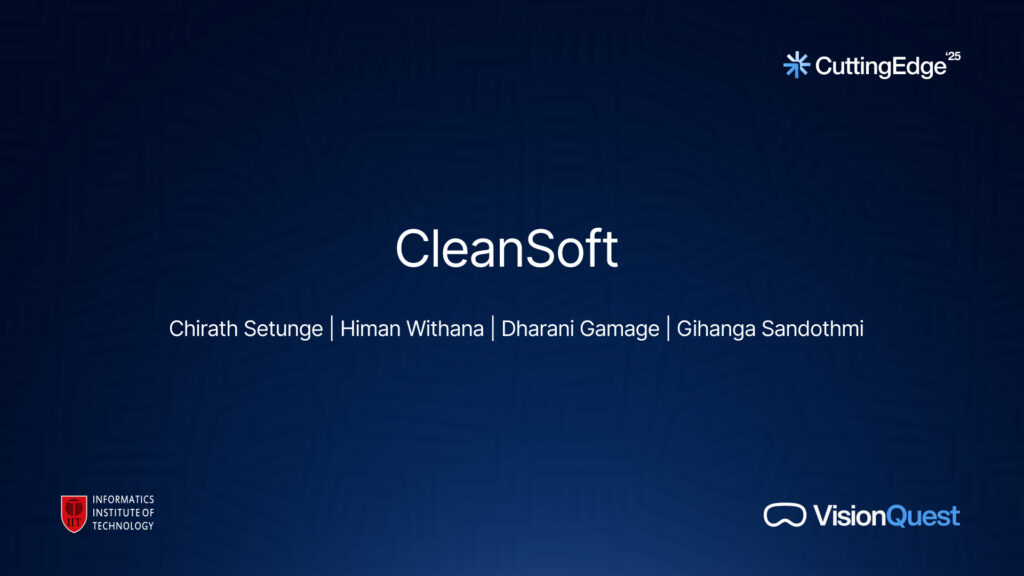
CleanSoft is an advanced Municipal Solid Waste Generation Prediction and Management System, purpose-built for the urban context of Dehiwala-Mount Lavinia, Sri Lanka. With the flexibility to scale across other municipalities. The platform leverages state-of-the-art machine learning models to accurately forecast daily waste generation for both households and hospitals, incorporating dynamic factors such as weather, patient counts, and seasonal trends. By integrating a bidirectional Dijkstra algorithm with real-world OpenStreetMap data, CleanSoft optimizes waste collection routes. The system’s multi-driver allocation further enhances efficiency.
A core feature of CleanSoft is its Retrieval-Augmented Generation (RAG) chatbot, which streamlines communication between citizens and municipal authorities. This AI-powered assistant enables residents to submit complaints, provide feedback, and receive timely waste management guidance, while also generating actionable summaries for administrators.
Designed with a modular, scalable architecture and a user-friendly web interface, CleanSoft ensures secure, role-based access for administrators, drivers, and citizens. CleanSoft delivers a comprehensive, data-driven approach to smarter, cleaner, and more responsive urban waste management.
Cultiveer
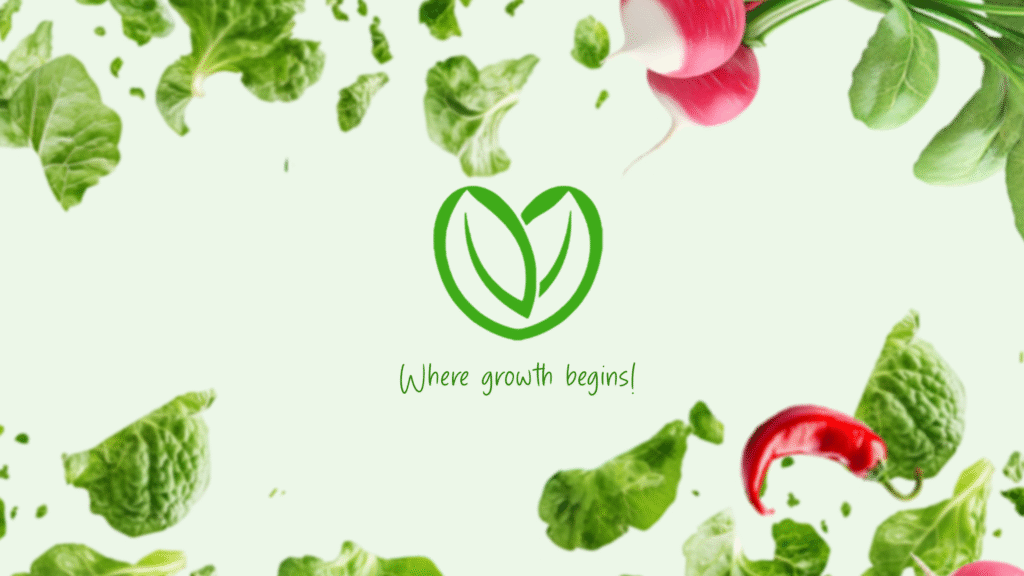
Cultiveer is a smart agriculture platform that combines IoT technology with mobile accessibility to support both commercial rice farmers and urban home growers. It aims to modernize farming in Sri Lanka by delivering tailored, data-driven insights to farmers while promoting sustainable, self-sufficient gardening in cities.
At its core, Cultiveer uses real-time data from IoT devices to monitor soil nutrients (NPK), moisture, and environmental conditions. For rice farmers, this means accurate fertilizer recommendations, crop-specific guidance, harvest yield predictions, and cost tracking. One Cultiveer device can serve up to 100 farmers, making it highly scalable and cost-effective in rural areas.
For urban users, Cultiveer introduces a broader smart farming ecosystem, with the Smart Pot as its starting point. This indoor gardening system automates and guides plant care with real-time health monitoring, crop suggestions based on indoor conditions, and meal coverage predictions-making food-growing more practical and rewarding for city dwellers.
Cultiveer’s goal is not just automation but an engaging and educational experience for users with limited space and time. The ecosystem is designed to expand, with future features like companion tools, guided planting routines, and smart integrations to simplify home farming.
To support this, Cultiveer includes a centralized marketplace for seeds, tools, and accessories. With a working prototype developed in partnership with hardware sponsor Lionbit Solutions, Cultiveer is already demonstrating its potential to transform both commercial and household agriculture into a smarter, more sustainable practice.
AR powered home garden measuring app
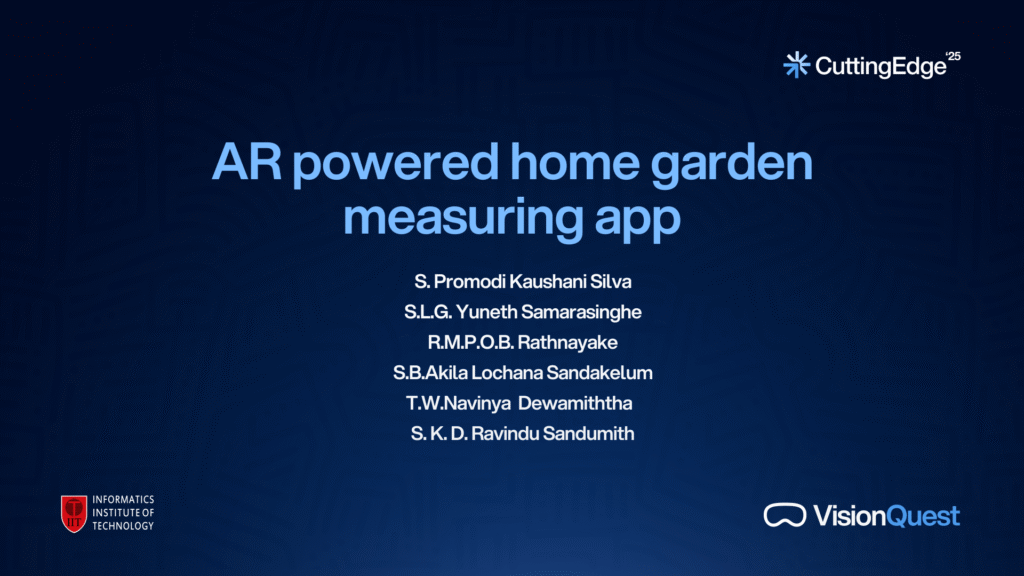
Ceilão.Grid is a smart Android-based mobile application developed to revolutionize small-scale gardening and promote sustainable agriculture in Sri Lanka. The core idea is to empower individuals—especially urban dwellers and small-scale farmers—to grow their own food effectively, even in limited spaces, while reducing reliance on chemically grown commercial produce. The app leverages advanced technologies like Augmented Reality (AR), Artificial Intelligence (AI), and real-time weather APIs to deliver a personalized and practical gardening experience.
Using AR, Ceilão.Grid allows users to scan and measure their available land accurately, offering optimal layout plans for planting. Based on the scanned data, location, and soil type, the app recommends suitable crops and intercropping methods. It also provides cost estimations, revenue predictions, watering schedules based on weather forecasts, and guidance on pest control using an AI chatbot.
Furthermore, with offline accessibility and a simple UI, Ceilão.Grid is designed to be inclusive and user-friendly for a wide audience. The app’s modular design, developed using Kotlin and Node.js, ensures maintainability and scalability.
Ceilão.Grid isn’t just a gardening tool—it’s a lifestyle companion that encourages eco-conscious living, community development, and food independence. It addresses real-world problems with a blend of technology and empathy, making sustainable gardening achievable for all.
Evaluating the Impact of Shadow Coverage on Rooftop Solar Photovoltaic Systems and Optimizing Panel Placement
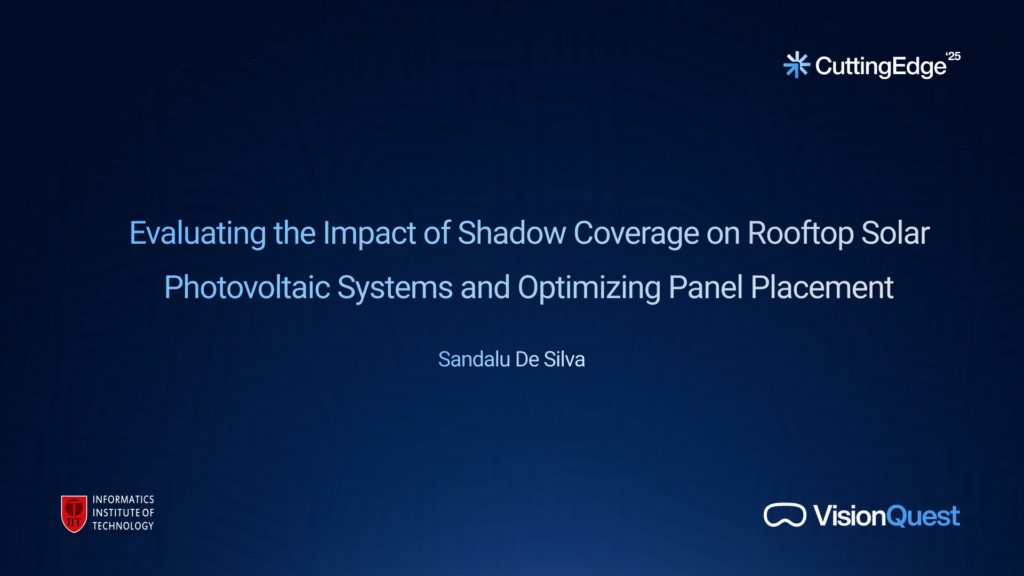
“This project, titled SolarSync, focuses on optimizing rooftop solar photovoltaic (PV) systems by addressing the critical issue of shadow coverage in urban environments. In densely populated areas, shadows from surrounding buildings and structures dynamically change throughout the day and seasons, significantly impacting solar panel efficiency. Traditional PV placement models typically use static data, ignoring these dynamic shadow variations and resulting in suboptimal energy generation.
To overcome this limitation, the project introduces a machine learning-powered system that leverages instance segmentation using the Mask R-CNN architecture for precise building and shadow detection. This is integrated with a dynamic shadow simulation model that estimates building heights and tracks sunlight exposure in real time using high-resolution satellite imagery. Together, these technologies enable accurate modeling of shadow behavior and allow for data-driven optimization of solar panel placement on rooftops.
The solution was evaluated using rigorous performance metrics, achieving high segmentation accuracy with an F1-Score of 0.8976 and Average Precision (AP) of 67.8% at an IoU threshold of 0.5. SolarSync sets a new standard in rooftop solar PV optimization by offering a scalable, globally adaptable tool that enhances the efficiency and sustainability of urban solar energy systems.”
PLANT-EASE
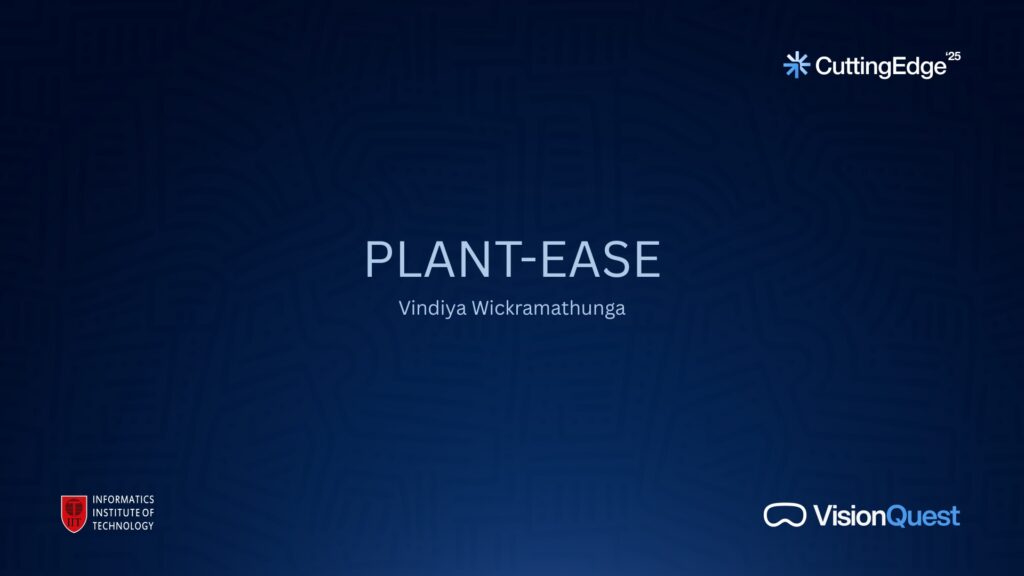
A deep learning-based web application that detects diseases in cinnamon plants and provides visual explanations using Explainable AI (XAI) techniques. A custom CNN model is trained on a cinnamon plant image dataset to classify diseases such as leaf spot, rough bark, and stripe canker. The system integrates Grad-CAM++ and HiRes-CAM to highlight the regions in the image that influenced the prediction, helping farmers and agricultural experts understand and trust the AI’s decisions.
